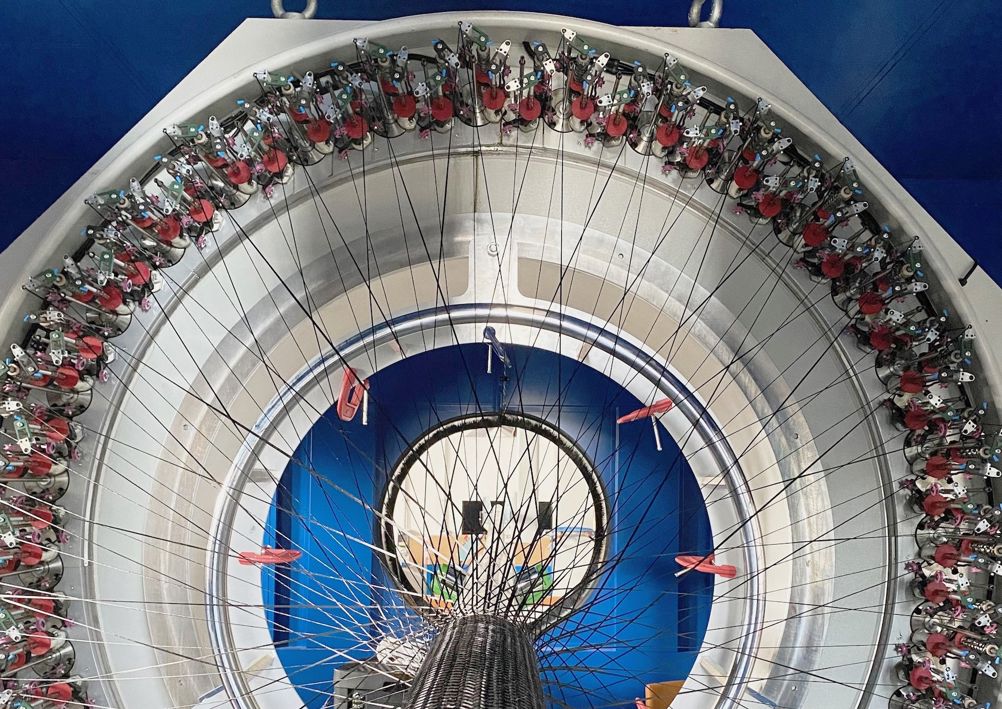According to the Department for Transport (DfT), trains are one of the least emissions-intensive modes of passenger transport[1]. However, it’s important to note that these calculations predominantly focus on ‘direct emissions’ – the physical burning of petrol or diesel and the related greenhouse gases.
Too little focus is given to the ‘indirect emissions’ from transport, which are best defined as those related to all other aspects, from manufacturing and construction to maintenance of infrastructure, as well as emissions across the sector’s incredibly complex supply chains. Indirect emissions are hugely difficult to quantify, as they can emanate from a wide variety of sources, but they are no less crucial in the UK’s journey towards net zero.
In positive news, the UK is doing rather well at decarbonising direct emissions from trains, which only account for around 1-2% of the UK’s total transport emissions[2]. Where we now need real focus is in decarbonising the materials, manufacturing, maintenance and other fringe operations needed for trains to run effectively.
Solving the problem of indirect emissions
Materials and maintenance are the most carbon-intensive elements of railway infrastructure[3], but these can be abated by swapping out traditional steel-based components with lightweight, low-carbon alternatives like composites. Creating composites through braiding, a process whereby thermoplastics are woven into their final forms in a highly automated process, results in much lighter, low cost materials with significantly lower production times and labour costs. What’s more, they are deliverable at much higher volumes.
While composites are often portrayed as non-recyclable, many can in fact be separated into their component fibre and thermoplastic parts, remoulded and repurposed. This keeps materials in the value chain for longer – in some cases up to a hundred years – a real boost for the circularity of the rail sector.

Carbon fibre is just one example of a composite that offers high potential for use in the rail sector. While this material is indeed more energy intensive to create, it’s much, much lighter (around 70% lower density than steel), which equates to significant emissions saving across its entire lifecycle.
The use of lightweight composites like carbon or glass fibre for lighting and communications masts and bridges – critical pieces of rail infrastructure – mean that these structures are lighter and easier to transport, assemble and put in the ground. Within trains themselves, components like frames, racks and grab poles can also be manufactured using carbon or glass fibre, which leads to much lighter and therefore more energy efficient transport.
But is this solution scalable to a point where it can truly make a difference in national rail infrastructure?
Achieving mass-scale decarbonisation
It almost goes without saying, but the UK’s rail industry is gigantic, and the majority of finance, materials and energy use in the sector goes into the manufacture, running and maintenance of heavy rails, such as passenger trains and freight. What we mustn’t forget, however, is the rapidly developing light and very light rail sectors, like trams and monorails, which can be used as a proving ground for new and innovative low-carbon technologies and processes, before being scaled up to suit heavy rail.
There is a huge opportunity for carbon fibres and other advanced carbon and glass composites to be utilised on very light rail, where weight saving can provide the greatest returns at relatively low cost. Grab poles, for example, can be made from composites that weigh around 60% less than those made of mild steel, while offering the same strength and stiffness, with the optional addition of anti-microbial properties.
In manufacturing, braiding can bring production time down from two and a half hours to under five minutes, and energy usage down from 70kwh to just 1.5kwh – a massive 98% reduction in energy use and related carbon dioxide emissions.
There are also wider benefits outside of use within the UK’s rail system. The EU recently implemented its Carbon Border Adjustment Mechanism (CBAM)[4], which adds a levy to materials imported into the EU that have high embodied emissions. Reducing the carbon footprint of UK-manufactured good unlocks easier, cheaper trade with the EU and boosts our competitiveness in international markets.
The UK also has its own version of CBAM[5], so UK manufacturers that can prove reduced emissions in their supply chains will have greater competitiveness against imported goods. A large variety of materials used in trains and rail infrastructure are imported, and by utilising low-carbon composites we have a real ability to onshore production and keep manufacturing within the UK.
The use of low-carbon components produced with quick, energy efficient, low-cost braiding processes have the potential to move the needle when it comes to alleviating the indirect emissions of the rail sector, with the most immediate benefits to light and very light rail, yet with huge potential to decarbonise heavy rail infrastructure and accelerate the UK’s transition to net zero.

Steve Barbour is managing director of Composite Braiding
Visit our jobs site https://jobs.theengineer.co.uk/ to find out about some of the latest career opportunities at industry's biggest employers
[1] https://www.gov.uk/government/statistics/transport-and-environment-statistics-2023/transport-and-environment-statistics-2023
[2] https://www.networkrail.co.uk/stories/how-is-the-railway-becoming-even-greener/
[3] https://decarbon8.org.uk/wp-content/uploads/sites/59/2022/02/Measuring-Railway-Infrastructure-Carbon-report.pdf
[4] https://taxation-customs.ec.europa.eu/carbon-border-adjustment-mechanism_en
[5] https://assets.publishing.service.gov.uk/media/65fc11fef1d3a0001132ac6f/Introduction_of_a_UK_carbon_border_adjustment_mechanism_from_January_2027.docx.pdf











McMurtry Spéirling defies gravity using fan downforce
Ground effect fans were banned from competitive motorsport from the end of the 1978 season following the introduction of Gordon Murray's Brabham...